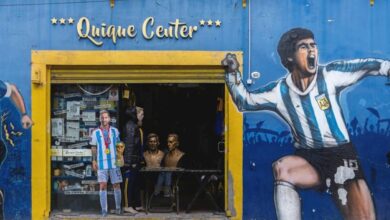Gustavo Quintana: A doctor between life and death
The doctor Gustavo Quintana has been performing euthanasia for more than 30 years, that process that for him is an opportunity to die with dignity when life has stopped being so

Dr. Gustavo Quintana, during an interview in Bogotá / Taken from: semana.com
LatinAmerican Post | Juliana Suarez
Listen to this article
The debate about euthanasia, for some, is untouchable: life must be respected and await death. For others, part of a dignified life also means being able to make the decision to die when it is still possible to decide. The doctor Gustavo Quintana has been performing euthanasia for more than 30 years, that process that for him is an opportunity to die with dignity when life has stopped being so. For his years of experience, he has been called the Colombian Dr. Death, in reference to the 'original' Dr. Death, an American who dedicated to carrying out the process during the 90s. Quintana's struggle, beyond euthanasia, refers to the privacy of each person, in order to decide how to die without being judged.
Leer en español: Gustavo Quintana: Un médico entre la vida y la muerte
In a tenancy in Bogotá, a woman under 50 was slowly waiting for her body to gradually stop functioning. Diabetes had caused her to lose her kidneys, she had been going on dialysis for several years almost every day of the week, so having a normal life was not an option. Sometime later she lost her sight, so she had to start being accompanied by someone on dialysis. At that time, she was about to lose both of her legs, which would have to be amputated in a few days.
Her life was no longer a life, it was not worth continuing to endure that. That's why she called Gustavo Quintana. She wanted to rest and he could help her not to feel more pain. In her blood, he injected an anesthetic that deprived her of feeling any pain, not even the drowning of her own oxygen term. Then he applied a cardiac depolarizer that stopped her heart and four minutes later, this woman was no longer suffering.
This procedure is better known as euthanasia: for some, it generates total rejection, for others, it is the way to decide to die with dignity.
411 euthanasia processes later, Dr. Gustavo Quintana, also known as Dr. Muerte (Dr. Death), reliably says that he is in love with life. “If I could ask for something, it would be to live 50 more years. "Seeing the sunrise or a flower bloom seems to me to be impressive everyday moments, which are worth appreciating every day ”, contrary to those who call him a murderer.
"Who is Dr. Death?"
"I allow them to call me that way, but with one caveat," Quintana replies. "I am not a murderer, I am not a hitman. I am a person as normal as anyone, who has a great sensitivity that allows me to help patients, understand their pain and help them out of that pain. That is their right since the Constitutional Court endorsed it.
This process in Colombia was decriminalized in 1997, unlike what many believe when they say it is still prohibited. Then, in 2015, Alejandro Gaviria, the Health Minister at the time, regulated it. It is currently one of the countries that has one of the most advanced regulations in the world, and the most advanced in the region.
After several discussions that have included whether to allow minors to access, or under 7 years of age; it was until 2018 that this was fully regulated. Affirming the permits that there must be, in case of being under 12 years old, but allowing even babies to access the procedure. "The right to live in dignity also implies the right to die with dignity," said politician Carlos Gaviria, who was a magistrate at the time." From then on, dying with dignity became a matter of will.
Read also: Grey fingers: Ageing Singapore uses gardening to fight loneliness
Currently, the law allows euthanasia under three parameters:
-
It will be done to a terminally ill patient who has no choice but to die.
-
The patient must express the desire not to want to live.
-
The doctor who performs the procedure must be registered and must know the method for not causing pain.
Assisted suicide is the term that erroneously, according to Quintana, is referred to this process. Suicide has a negative connotation, and a person who commits suicide is not the same as one who seeks professional help to avoid suffering pain and suffering until the inevitable day of death.
"Death is inevitable," Quintana says. When we all understand that, we can worry about enjoying life. Thus, when we die, we do not worry and accept it without trying to prevent it at all costs,” he continues. The whole life, the exercise of living, is about self-control. So why can't death also be a matter of self-control?
But Gustavo Quintana did not always want to be a doctor, much less an expert in euthanasia. All his life, after a Catholic upbringing, specifically Jesuit, took him another way. That is what he calls the greatest paradox of his life. His eagerness to help others, that was always present, led him to enter the Jesuit minor seminary and go to the priesthood. He arrived at the major seminary, he remembers to look very comfortable while wearing the Jesuit cassock and made vows of chastity, poverty, and obedience.
But while he was in the novitiate he understood that he would serve more in his mission as a layman than as a priest and he went to study medicine. Time later turned him into an agnostic.
When he was a doctor, he had a car accident in which he thought his cord would be affected. Having to live in a bed for the rest of his life when he was just 35 years old was not an option for him.
On the way to the hospital he told a friend, who also was a doctor and who accompanied him, “please, I beg you, if that is my diagnosis, do not do anything to me. Let me". That day he understood that as he disposed of his life, he wanted to be able to dispose of his death. A year later he made his first euthanasia.
Alejandro Gaviria, like Quintana, is passionate about life. For this reason, Gaviria in his work as minister advanced in that legislation. Today, Quintana admires the former minister who, in his book Today is always still (Hoy es siempre todavía), written as a result of cancer while doing his job at the Ministry of Health, showed a life and death perspective very similar to that of Dr. Death.
The advance has allowed hundreds of people to use this method to end their lives under their own parameters, and without being judged. However, the road, according to Quintana, is still beginning. “The Ministry intends that there be a review committee for each case, that was what Ordoñez tried when he was the Procurator. But there, where is the privacy and the respected doctor-patient relationship? Now the debate is the right to privacy. I would like to speak with Gaviria and organize a respectful debate at the University of Los Andes (of which the former minister is currently rector). He is a serious and diplomatic man, and he understands my point. I wish they could open up to understand it.”
The real advance, according to him, will be the day that the International Human Rights Commission adds the right number 31: "Every human being has the most sacred to dispose of the end of his own life." This would allow a Catholic to wait for God to take his life or a non-believer to die through a procedure such as euthanasia. In any case, anyone can decide how to die, as long as it does not affect someone outside.
This inveterate agnostic carries, however, that message of love that Jesus taught him all his life. Loving life and people is the reason he followed that path. He defines himself as a disciple and states that if there is a God above in heaven, he is surely looking at him and is grateful to help people finish completing their lives. “The same teachings that the Jesuits embodied in me are those that allow me to understand the pain of a terminal being and help him to die because no one gets rid of death anyway,” he says.
In a few years, when his life reaches the end, the only thing left of him will be his body, which he will donate to the university where he studied and will be his last contribution to the world. Meanwhile, he creates links with each of his patients: he accompanies them in their last minutes of life, always ensures that the reason is not momentary and encourages them to get psychological help and leave everything in order.
In any case, his life's motto is to give, learn and teach. Beyond his work, he seeks the welfare of those people who come to him. Through his Facebook page, 'Die Dignly' (Morir Dignamente), he serves people even if it is only for talking. Some of them do not continue with the euthanasia process, but hundreds approach him for support.
"After each procedure, I arrive at my house, get in between the blankets and rest," he says. "I am happy because I know that I am not doing anything wrong."




